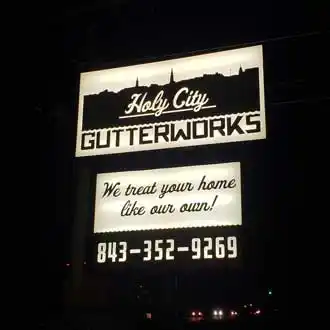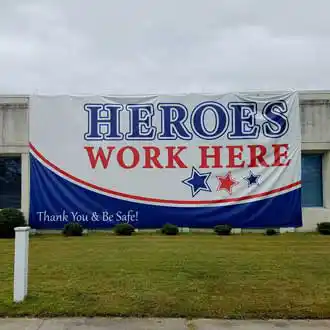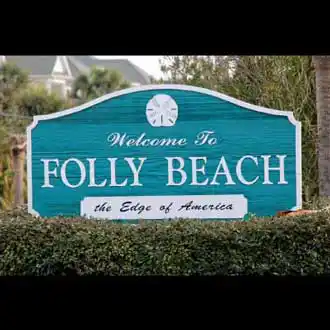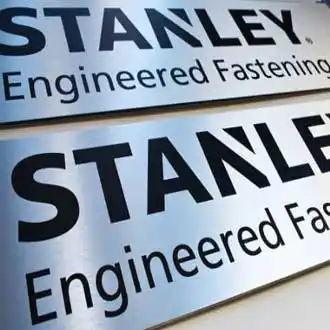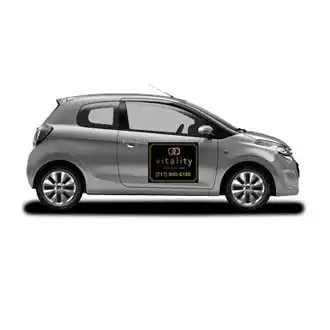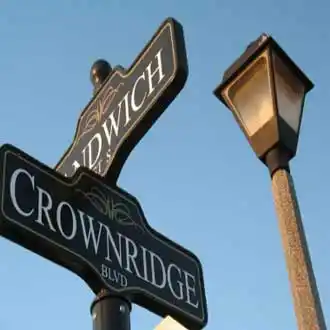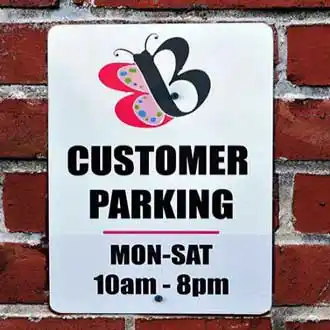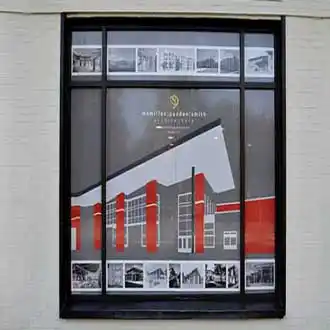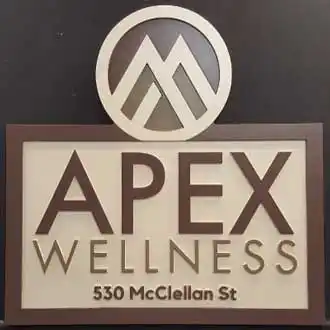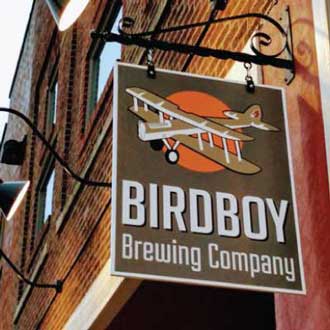Custom Outdoor Business
Signs & 3D Letters
Engineered to Last!
FREE QUOTES


Shopping online for custom outdoor signs can be surprisingly tough!
Finding a custom sign that is an ideal match for your project can be quite challenging at times because there's such an extensive selection to choose from.
Our goal is to enhance your online sign shopping experience by complementing our website with helpful, personalized assistance.
I'm Tim Harrelson, the original founder and author of TheSignChef.com
With 37 years of sign industry experience, my journey has been driven by an unwavering passion for providing high-end quality signage.
Please don’t hesitate to contact us with any sign questions you may have - we’re here to help!
Start your journey by selecting one of the outdoor sign categories below.
Get a Free Competitive Quote delivered to your inbox within minutes, not days.
In less than 90 seconds, you can use this new 2024 form to expedite your quote request.
This form is one of the quickest ways to get up-to-date pricing information for your sign project.
You can quickly compare prices & options by submitting your Quote Request today.
You'll be glad you did!
Tim Harrelson
ceo@thesignchef.com
Original Founder & Author of TheSignChef.com
Get a Quote Today!
What Our Clients Are Saying...
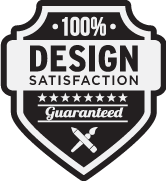
Your Design Satisfaction is 100% Guaranteed.
This unique Guarantee is only offered by TheSignChef.com.
We guarantee you will be delighted with your final design,
or your Money Back - simple as that.
See full details.
We Serve All Types of Organizations
Product Information for Custom Outdoor Business Signs
What are the 7 best sign materials for outdoor use?
Here is the definitive list of the top 7 business sign materials used to manufacture outdoor signs:
1. Dibond
Invented in 1965, Dibond has stood the test of time outside as one of the most durable construction materials
available in the entire sign industry. Rigid, aluminum-plated Dibond custom sign panels are:
- Unusually versatile
- Strong
- Waterproof
- UV stable, and
- Unaffected by hot & cold temperature extremes.
2. Alumalite
The engineered, honeycomb structure of Alumalite provides 240% greater panel strength for areas prone to
high winds. The impressive, weather-resistant characteristics of Alumalite signs are the same as Dibond.
For rectangular or square shapes, Alumalite remains one of the best materials to use for exterior signs. Other types of materials are preferred when custom sign shapes are required.
See All 7 of the Industry's Top Outdoor Signs
About the author:
Tim Harrelson was destined to become one of the leading experts in the sign industry. With over 36 years of experience working with local & national brands, he has accumulated a lifetime of experience & knowledge. Tim's expertise and innovative approach to sign manufacturing has been featured in Charleston’s Post & Courier Newspaper and National Sign Magazines including Signs of the Times. Tim continues to share his insights helping businesses & organizations of all sizes navigate the complex world of custom signs.
Big or Small, We Do All Custom Signs!
- While most sign companies are setting limits to what size your business sign can be, we are printing outdoor signs in every size.
- Outdoor signage from TheSignChef comes in sizes up to 6' x 12' in a single, seamless sheet.
- If you need a sign that is larger than that, no worries! Just let us know, and we'll make sure to get you any size business sign you need.
- The most popular storefront sign sizes available for Custom Outdoor Signs are as follows:
- 10" x 12"
- 12" x 18"
- 18" x 24"
- 24" x 36"
- 36" x 72"
- 48" x 96"
- 48" x 120"
We find the right solutions and custom-cut more shapes for Outdoor Signs than any other sign company!
- TheSignChef.com will cut your Outdoor Signage to ANY custom shape.
- Pictured below are a few custom sign shapes, if you need an Outdoor Sign in a unique shape, let us know.

Your options for Custom Outdoor Signs:
- Aluminum: Custom aluminum signs are strong, lightweight and super durable. Aluminum is the thinnest of all metal sign composites.
- Alumalite: Alumalite is a metal sign panel made of a corrugated plastic core sandwiched between 2 large aluminum sign boards.
- Dibond: Dibond is a metal sign panel made of a solid plastic core sandwiched between 2 large aluminum sign boards.
- ARMOUR-Wood: ARMOUR-Wood is a metal sign panel made of a solid wood core sandwiched between 2 large aluminum sign boards. This is the strongest metal sign composite.
- Coroplast: These are made from a durable corrugated plastic and are therefore extremely lightweight. They are also waterproof, making them preferable to foam core mounting board, and more professional looking than poster board.
- Dura-Wood: These classic wooden signs are still popular for a number of reasons. They are extremely strong and weather resistant. We also use rot-safe wood.
- A-Frames: A-frames (also called sandwich boards) are a sharp looking and easy-to-install way to display your outdoor signs on sidewalks or in the center of town plazas. We have a wide selection of styles and sizes for your signage.
Colors
We offer more colors for Outdoor Signs than anyone out there on the web!
- You can now choose from ANY color under the sun when designing your new business sign, stickers, cards and banners.
- You can even choose a reflective color.
- PMS Color Match available on most materials.
Installation
Displaying Outdoor Signage is easy!
- We offer installation kits and accessories that will help you mount your new sign to wood, metal, stucco, brick masonry or concrete!
- We offer a large variety of scroll brackets for hanging your new custom sign.
- We can drill holes to the top of your sign to simplify the hanging process.
- A selection of screw caps is available for a finished polished look.
- The adhesive backing available on small and lightweight signage.
- Complete selection of frames, posts, and stakes.
- We offer a variety of sidewalk A-Frames.
Sometimes, all you want is the bottom line!
- Our online Outdoor Sign pricing tool instantly calculates the exact prices on Outdoor Signs.
- At TheSignChef.com, shipping for all Outdoor Signs is free for orders within the continental US greater than $125 for ground and greater than $400 for freight.
- Orders outside the state of South Carolina are tax-free!
- We do offer quantity breaks at 1, 2, 3, 4, 5, 10, 15, 20, 25, 50, 100, 250, 500, 1000, 2500 and 5000.
Available Design Options:
- PMS Color Match
- Brushed Silver Finish
- Brushed Gold Finish
- Mirror Finish
- Custom Hole Placement
- Custom Shapes
- Rounded Corners
- Dry Erase Laminate
- Reflective Colors
- Trim Cap
Excellence Guaranteed.
Frequently Asked Questions about Custom Outdoor Business Signs
Here is the definitive list of the top 8 materials used for custom-designed outdoor business signs:
- Aluminum is the single most popular metal sign material due to its corrosion resistance.
- Alumalite metal sign panels are available in ¼” and ½” thickness.
- Armour-Wood sign boards combine an armour-plated aluminum surface with a wood core for exceptional strength and outdoor durability.
- Dibond metal sign panels - Both aluminum & magnetic-receptive steel sign boards are available.
- Dura-Wood sign boards are still one of the most durable sign materials in the sign industry.
- HDU - Custom, High Dimensional Urethane sign foam is completely waterproof and never rots.
- Lexan Plastic is utilized to make the world’s most break resistant sign faces. These plastic inserts are ideal for replacement backlit sign faces.
- Western Red Cedar remains one of the most weather resistant and beautiful wood materials to use for custom wood signs.
The world’s longest lasting outdoor business signs include TheSignChef’s custom 3D metal letters, logos, and solid metal plaques which come with a Lifetime Replacement Warranty.
Other Forever products include solid & deep formed dimensional plastic letters.
Exceptionally durable sign materials like High-Density Urethane & Western Red Cedar can last for decades outside.
Digitally printed custom signs for use outdoors range in durability from 2 to 15 years, depending on the grade you select.
Yes, we will gladly assist you with the layout and design of all your custom signs, free of charge. All orders come with a 100% Design Satisfaction Guarantee or Your Money Back.
Customized outdoor signage is crucial for businesses as it serves as a first impression, visually communicating your brand's identity and values. It not only attracts attention but also helps in distinguishing your business from competitors. Effective signage can increase foot traffic, aid in branding, and reinforce customer recall, making it a vital tool for business growth and visibility.
Outdoor signs are made visible at night through various lighting options such as LED backlighting, front-lit channel letters or spotlight illumination. Highly reflective sign materials are also used to enhance night time visibility. These methods ensure that your sign is not only visible but also visually appealing after dark, enhancing both its impact and functionality for 24-hour brand visibility.
Exterior signage is weatherproofed using durable sign materials like Aluminum, Acrylic, Dibond, Lexan, Plexiglas along with High-Performance Vinyl Graphics. Sign-grade protective coatings are also used to resist water, UV rays and corrosion. We use specialized fabrication techniques to ensure the sign's surface and structure can withstand various weather conditions, ensuring longevity and maintaining its visual appeal over time.
Determining the best size for custom signs mounted outside is similar to a Chef crafting the perfect dish. It involves a blend of ingredients, each measured to perfection, ensuring the final result is both delightful and fitting to the occasion. Here’s TheSignChef’s inspired take on properly sizing outdoor signage.
- Purpose of the Sign - The Main Ingredient
Just like a main ingredient sets the tone for a dish, the purpose of the sign is fundamental. Whether it's for branding, direction, advertising, or information, each serves a distinct role. The main outdoor sign for an organization, like a hearty main course, needs to be larger to satisfy its role, while a directional wayfinding sign, akin to a side dish, can be smaller yet still significant. - Viewing Distance
The further away the sign needs to be read, the larger it should be. There are general guidelines that suggest for every 10 feet of viewing distance, the lettering on the sign should be at least 1 inch tall. However, this can vary depending on the complexity of the message and the speed at which viewers are passing by. - Local Regulations and Zoning Laws
Many areas have specific regulations about the size of outdoor signage. It's important to check with local authorities to ensure compliance with any size restrictions or permit requirements. - Space Availability
The physical location where the sign will be placed also dictates size. The sign should fit comfortably within the space without appearing cluttered or overwhelming. - Design and Readability
In cooking, balance is key, and the same goes for sign design. A sign that's too large for its content can be like an over-seasoned dish – overpowering and unappealing. The design should enhance the content, creating a harmonious balance that is easy to digest visually. - Budget and Material Considerations
Just as a chef must work within a budget, choosing the right ingredients without compromising quality, sign makers must balance the cost of materials and installation with the overall impact of the sign. - Environmental Factors
In areas with high winds or harsh weather, overly large signs might be prone to damage. Durability should be considered alongside size.
In essence, there's no one-size-fits-all in sign making, just as there's no universal recipe in cooking. Each sign, like every dish, is unique, tailored to fit its specific context and purpose
The cost of an outdoor wall sign varies based on factors like size, material, design complexity, and installation requirements. Prices can range from a few hundred to several thousand dollars. For an accurate Sign Quote tailored to your specific needs, please contact us with your sign specifications.
The term channel letters is derived from the method of their construction, wherein each letter is formed from a channel of aluminum or stainless steel material. The hollow channel that forms the stroke of each letter, provides structure, depth and the ability to incorporate lighting for enhanced visibility and aesthetic appeal.
Outdoor signs are constantly exposed to elements like sunlight, rain, and air pollution, which can cause them to fade over time. To ensure the longevity and vibrancy of custom signs, special materials and coatings are used.
Commercial, Sign Grade Paints
High-quality paints specifically designed for outdoor use play a crucial role in protecting custom signs from fading. Brands like Sherwin Williams offer commercial, sign-grade paints that are formulated to withstand harsh outdoor conditions. These paints contain pigments that are more resistant to UV rays and weathering, helping maintain the color and finish of the sign over extended periods. Their specialized composition ensures that the signs retain their brightness and clarity, even with prolonged exposure to sunlight.
Clear UV Protective Laminates
Another effective way to protect custom signs from fading is through the use of clear UV protective laminates. These laminates are applied over the surface of the sign, acting as a shield against UV radiation, moisture, and pollutants. The laminate not only prolongs the life of the sign by preventing fading but also adds a layer of physical protection against scratches and abrasions.
Extended Outdoor Durability
Combining high-grade, UV-resistant paints with clear protective laminates results in extended outdoor durability for custom signs. This dual protection ensures that the signs can withstand various outdoor elements, from intense sunlight to varying temperatures and moisture levels. The outcome is a sign that remains visually appealing and legible for a longer time, making it a cost-effective solution for businesses.
The key to preventing outdoor signs from fading lies in using the right materials and protective coatings. Commercial, sign-grade paints and clear UV protective laminates are essential components in this process, providing resilience and longevity to outdoor custom signage.



